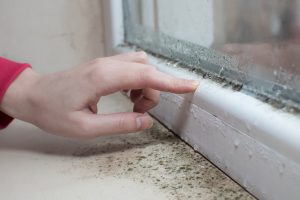How to Maintain and Clean Your Sound Absorbing Panels

Sound-absorbing panels are an essential component in many spaces, whether it’s a home theatre, recording studio, office, or restaurant. They help reduce echo and improve sound quality by absorbing excess noise and reverberation. However, to ensure that they continue to function at their best, it is important to properly maintain and clean them regularly.
In this guide, we will discuss the steps you can take to maintain and clean your sound absorbing panels effectively.
Why Maintaining Sound Absorbing Panels is Important
Sound absorbing panels work by reducing unwanted reverberations and echoes, creating a more controlled and professional sound environment. Over time, these panels can accumulate dust, dirt, and even mould, which can degrade their acoustic properties and shorten their lifespan.
Regular maintenance and cleaning are important to uphold their effectiveness and extend their durability.
Tools and Materials Needed for Cleaning
Before you start, gather the following tools and materials:
- Soft-bristle brush: Ideal for loosening dust and dirt without damaging the fabric.
- Vacuum cleaner with a hose attachment: Useful for removing loose particles.
- Mild detergent: A gentle cleaner to tackle stains without harming the material.
- Microfiber cloths: Perfect for wiping and drying the panels.
- Spray bottle: To apply the cleaning solution evenly.
- Distilled water: Prevents mineral deposits that could discolour the fabric.
Step-by-Step Guide to Cleaning Sound Panels
Cleaning sound absorbing panels may seem straightforward, but following a systematic approach will help maintain their acoustic properties and appearance.
1. Dusting
Begin by using a soft-bristle brush to gently dust the panel surfaces. This will help remove loose dirt and dust particles. Brush in one direction to prevent pushing dirt into the fabric.
2. Vacuuming
Next, use the vacuum cleaner with the hose attachment to remove any remaining dust. Hold the nozzle close to the fabric, but avoid pressing too hard to prevent damage. Vacuum in a slow, systematic manner to cover the entire panel.
3. Spot Cleaning
For stains, mix a small amount of mild detergent with distilled water in a spray bottle. Lightly mist the affected area and use a microfiber cloth to gently blot the stain. Be careful not to saturate the fabric, as excess moisture can lead to mould growth.
4. Drying
After cleaning, allow the panels to air dry completely before reattaching them to the wall. Avoid using heat sources like hair dryers, as high temperatures can warp the panels and affect their acoustic properties.
Tips for Long-lasting Performance
Maintaining the integrity of a sound absorbing panel is crucial for achieving optimal acoustic performance in any environment. Whether you’re designing a space for entertainment, work, or dining, understanding how to care for these panels can significantly enhance sound quality and prolong their lifespan.
- Regular Maintenance
Make it a routine to dust and vacuum your panels monthly. This helps prevent the accumulation of dust and debris, ensuring optimal performance over time.
- Utilise Air Purifiers
Install air purifiers in your studio to reduce airborne particles, helping to keep your panels cleaner for longer periods.
- Rotate Your Panels
Whenever possible, rotate your panels every few months to promote even wear and tear. This is especially important if certain panels are more exposed to environmental factors than others.
4. Control Humidity
Maintain a stable humidity level in your studio. High humidity can lead to mould growth, while low humidity can cause the panels to dry out and crack.
Common Mistakes to Avoid
When it comes to maintaining sound-absorbing panels, several common pitfalls can hinder their effectiveness and longevity. Understanding these mistakes can help you establish a consistent care routine that safeguards your investment and ensures optimal performance.
1. Using Harsh Chemicals
Refrain from using strong detergents or bleach, as these can harm the fabric and diminish the effectiveness of the panels.
2. Over-Wetting the Panels
Excess moisture can penetrate the panel’s core, leading to mould growth and deterioration. Always use a light mist and blot gently.
3. Ignoring Regular Cleaning
Skipping regular cleaning sessions can result in a build-up of dust and grime, which affects both the appearance and functionality of the panels.
Share Your Panel Cleaning Success
Following these steps and tips will ensure your sound absorbing panels remain in top condition, providing the best acoustic experience possible. We’d love to hear about your cleaning adventures! Share your before-and-after stories and photos with us and join our community of sound enthusiasts dedicated to maintaining their ideal listening environments.
Keep your sound crystal clear and your panels looking fresh!




